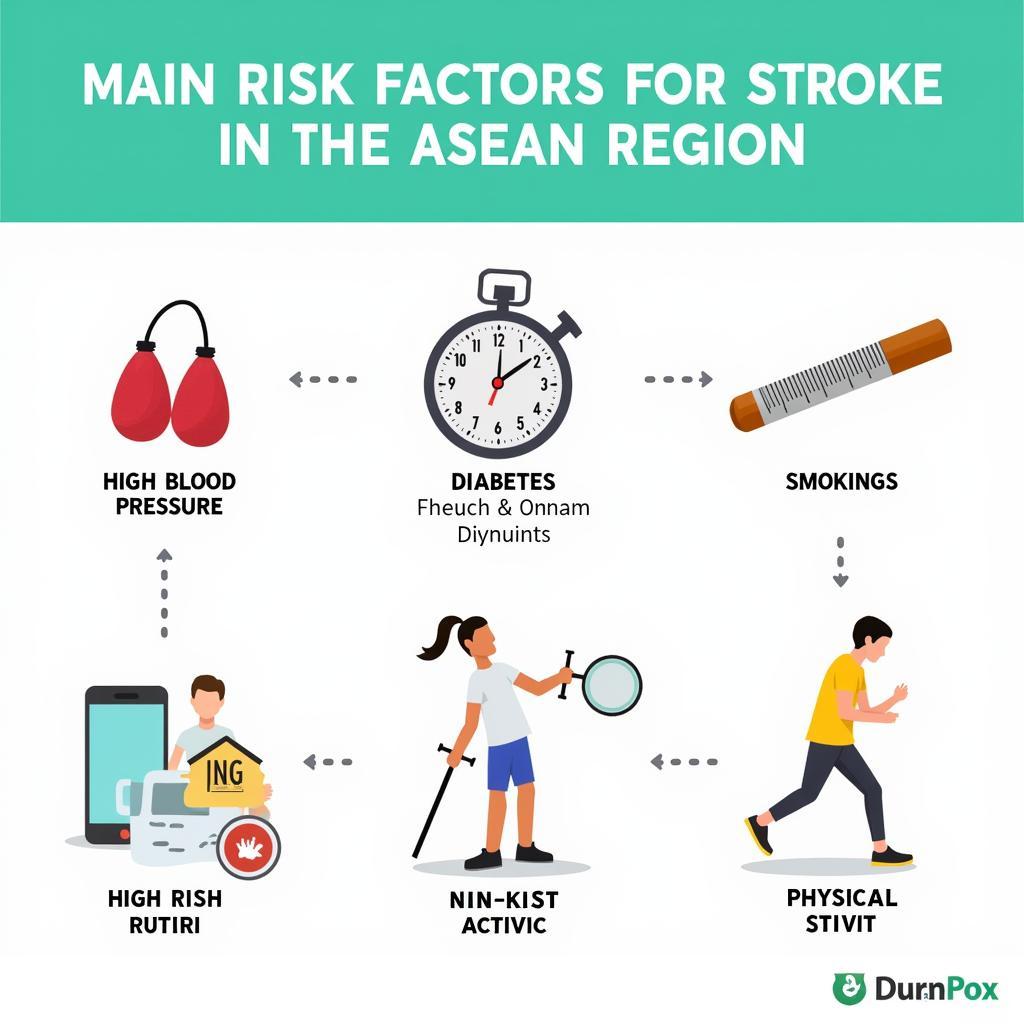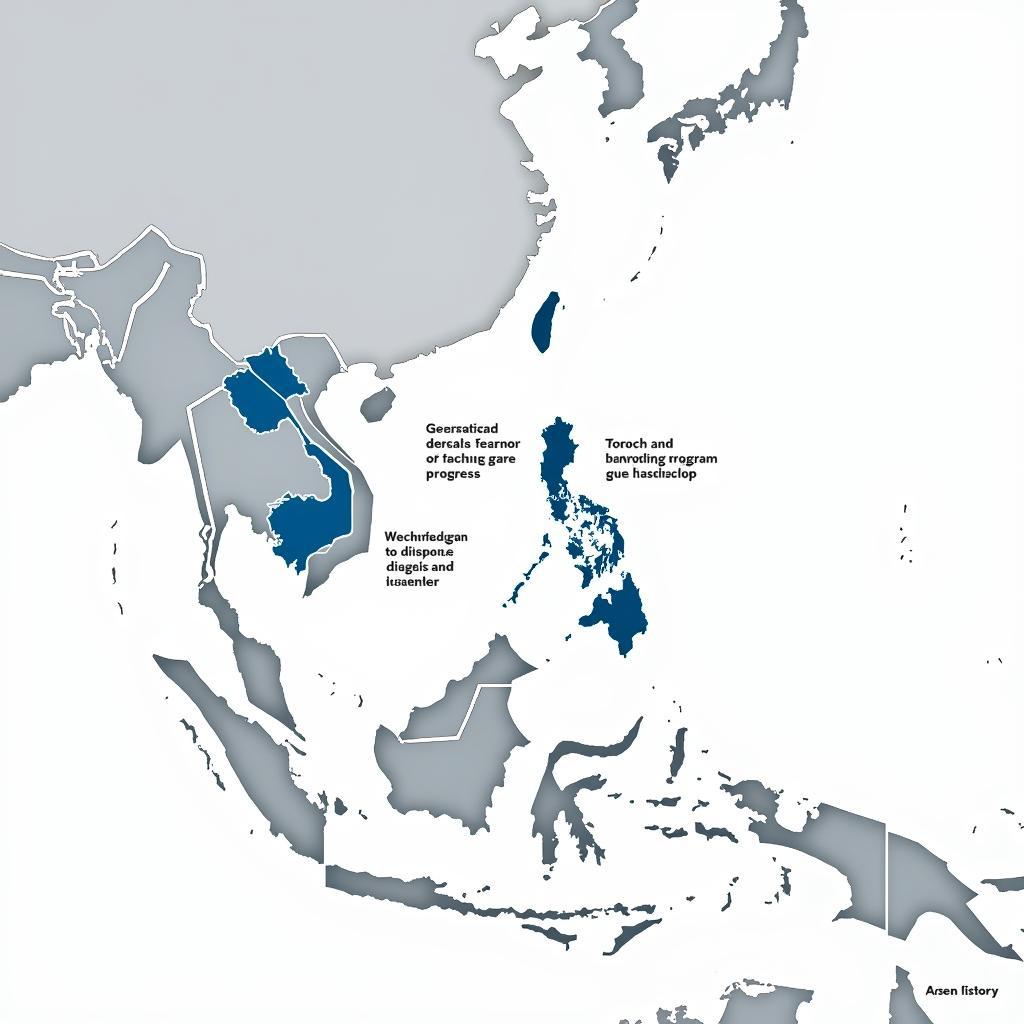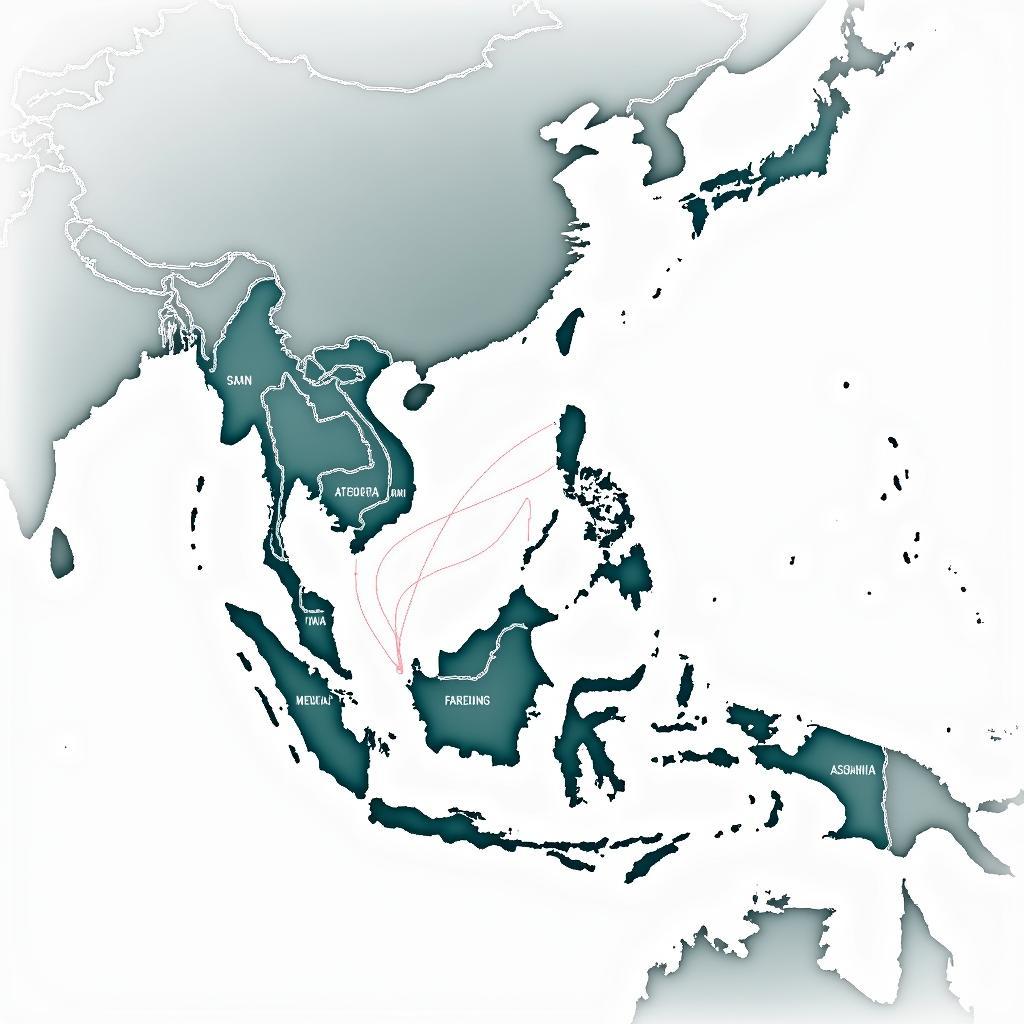Stroke is a significant health concern globally, and the ASEAN region is no exception. This article explores the specific challenges and opportunities in addressing stroke within the ASEAN community, highlighting the importance of awareness, prevention, and access to quality care.
While the global burden of stroke is well-documented, the unique demographic and socioeconomic landscape of ASEAN presents specific challenges. Factors like rising rates of hypertension, diabetes, and smoking contribute significantly to the stroke risk within the region. Understanding these risk factors is the first step towards effective prevention. Furthermore, the diverse healthcare systems across ASEAN nations can create disparities in access to timely and effective stroke treatment. Addressing these disparities requires collaborative efforts within the ASEAN community.
Stroke Risk Factors in ASEAN
Several key risk factors contribute to the prevalence of stroke in ASEAN countries. These include modifiable lifestyle factors and underlying health conditions.
- High Blood Pressure: Hypertension is a leading cause of stroke. Managing blood pressure through lifestyle changes and medication is crucial.
- Diabetes: Individuals with diabetes are at a significantly increased risk of stroke. Proper blood sugar control is essential.
- Smoking: Smoking damages blood vessels, increasing the likelihood of clot formation. Quitting smoking is one of the most impactful steps towards stroke prevention.
- High Cholesterol: High cholesterol contributes to plaque buildup in arteries, increasing stroke risk. Managing cholesterol through diet and medication is important.
- Physical Inactivity: Regular exercise can reduce stroke risk by improving cardiovascular health.
 ASEAN Stroke Risk Factors: High Blood Pressure, Diabetes, Smoking
ASEAN Stroke Risk Factors: High Blood Pressure, Diabetes, Smoking
Addressing Lifestyle Factors
Many stroke risk factors can be mitigated through lifestyle changes. Adopting a healthy diet rich in fruits, vegetables, and whole grains can help manage blood pressure and cholesterol. Regular physical activity, at least 30 minutes most days of the week, is also crucial. Avoiding smoking and limiting alcohol consumption further reduces the risk. These lifestyle modifications, while seemingly simple, can have a profound impact on reducing the burden of stroke in ASEAN.
Improving Stroke Care in ASEAN
Access to quality stroke care varies significantly across ASEAN nations. Strengthening healthcare infrastructure, particularly in rural areas, is essential. This includes improving access to specialized stroke units, diagnostic imaging, and thrombolytic therapy. Training healthcare professionals in stroke management and public awareness campaigns are also crucial components of a comprehensive approach to stroke care. Collaborative initiatives within ASEAN, such as sharing best practices and developing regional stroke guidelines, can further enhance the quality of care.
What are the first signs of a stroke? Common symptoms include sudden numbness or weakness on one side of the body, difficulty speaking or understanding speech, vision problems, dizziness, and severe headache. Recognizing these signs and seeking immediate medical attention is critical.
 Improvements in Stroke Care across ASEAN: Access, Technology, Training
Improvements in Stroke Care across ASEAN: Access, Technology, Training
The Role of Technology in Stroke Management
Telemedicine and mobile health technologies have the potential to revolutionize stroke care, particularly in remote areas with limited access to specialized facilities. These technologies enable remote consultations, stroke diagnosis, and patient monitoring, bridging the gap between patients and healthcare providers. Furthermore, AI-powered diagnostic tools can assist in rapid and accurate stroke detection, leading to faster treatment initiation.
Stroke Prevention: A Regional Priority
Stroke prevention should be a public health priority across the ASEAN region. Public awareness campaigns can educate individuals about the risk factors, symptoms, and importance of seeking immediate medical attention. These campaigns can be tailored to specific cultural contexts and disseminated through various channels, including social media, community events, and educational programs. Collaborations between governments, healthcare organizations, and community leaders are crucial for effective implementation.
Why is stroke prevention so important in ASEAN? The economic and social impact of stroke is substantial, affecting individuals, families, and communities. By prioritizing prevention, ASEAN countries can reduce the burden of stroke and improve the overall health and well-being of their populations.
 ASEAN Stroke Prevention Campaign: Education and Awareness
ASEAN Stroke Prevention Campaign: Education and Awareness
ase guidelines lvot measurement
Conclusion
Stroke continues to be a major health concern in ASEAN. Addressing this challenge requires a multi-faceted approach that focuses on prevention, timely diagnosis, and access to quality care. By prioritizing stroke awareness and implementing comprehensive strategies, the ASEAN community can effectively combat the burden of stroke and improve the health outcomes for its citizens. Early intervention and lifestyle changes are key to reducing the risk of stroke in ASEAN.
amsoil ase 10w-30 sae 30 4-stroke small engine synthetic oil
FAQ
- What are the common symptoms of stroke?
- How can I reduce my risk of stroke?
- What should I do if I suspect someone is having a stroke?
- Where can I find more information about stroke in ASEAN?
- Are there any support groups for stroke survivors in my country?
- What are the long-term effects of stroke?
- How can technology improve stroke care in ASEAN?
When you need support, please contact Phone Number: 0369020373, Email: aseanmediadirectory@gmail.com Or visit: Ngoc Lien Village, Hiep Hoa, Bac Giang, Vietnam. We have a 24/7 customer service team.


